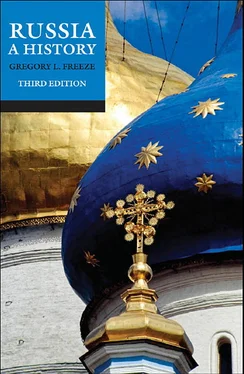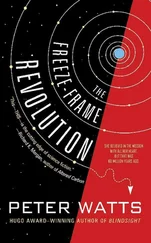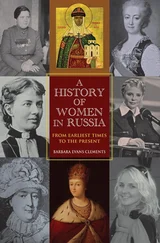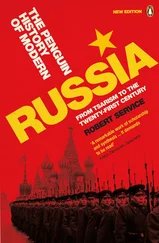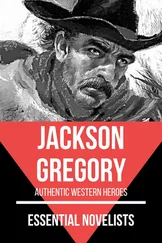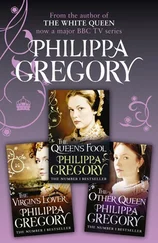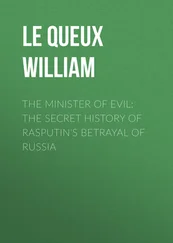But even as confrontations and conferences resolved disputes, the evolving rules of succession to the grand princely throne failed to anticipate new disputes stemming from the growth of the dynasty and state. As a result, throughout the twelfth century the dynasty was embroiled in numerous controversies, often triggered by attempts of members of younger generations to bypass their elders and to reduce the number of princely lines eligible for the succession. These conflicts escalated as dynastic branches formed rival coalitions, drew upon the enlarged populations and economic resources of their own principalities to enhance their military capabilities, and also fought for control over secondary regions, especially Novgorod, whose wealth and power could give a decisive advantage in the battles for the primary objective, Kiev.
The greatest confrontations involved the heirs of Grand Prince Vladimir Monomakh (1113–25). By the time of his death, his sons had become the exclusive heirs to the grand princely throne; first Mstislav (1125–32), then Iaropolk (1132–9) ruled as grand prince. An attempt by Iaropolk to arrange for his nephew (Mstislav’s son) to be his successor provoked objections from his younger brother, Iurii Dolgorukii, the prince of Rostov-Suzdal. The struggle persisted until 1154, when Iurii finally ascended to the Kievan throne and restored the traditional order of succession.
An even more destructive conflict commenced after the death in 1167 of Grand Prince Rostislav Mstislavich (who had appropriately succeeded his uncle Iurii). When a member of the next generation (Mstislav Iziaslavich, the prince of Volhynia) attempted to seize the throne, a coalition of princes formed to oppose him. Led by Iurii’s son Andrei Bogoliubskii, it represented the senior generation of eligible princes, but also included the sons of the late Grand Prince Rostislav and the princes of Chernigov. The conflict culminated in 1169, when Andrei’s sons led a campaign that resulted in the flight of Mstislav Iziaslavich and the sack of Kiev. Andrei’s brother Gleb, as prince of Pereiaslavl (traditionally the main seat of the house of Monomakh), became grand prince of Kiev.
Prince Andrei personified the growing tensions between the increasingly powerful principalities of Kievan Rus and their centre Kiev. As prince of Vladimir-Suzdal, he concentrated on the development of Vladimir and challenged the primacy of Kiev by building the Church of the Dormition in 1158 and his own Golden Gate. He also constructed his own palace complex of Bogoliubovo outside Vladimir, conducted campaigns against the Volga Bulgars, celebrated a victory over them in 1165 by building the Church of the Intercession nearby on the Nerl river, and extended his influence over Novgorod. Andrei used his power and resources, however, to defend the principle of generational seniority in the succession to Kiev. But his victory was short-lived: when Gleb died in 1171, Andrei’s coalition failed in its attempt to secure the throne for another of his brothers. The renewed struggle ended instead with a prince from the Chernigov line on the Kievan throne; his reign and the accompanying dynastic peace lasted until 1194.
By the turn of the century, eligibility for the Kievan throne was confined to three main lines: princes of Volhynia, Smolensk, and Chernigov. When the prince of Volhynia (representing the junior generation) claimed the throne, the rules of eligibility and succession were temporarily waived due to the sheer power that he was able to muster. Although the primacy of the senior generation was restored upon his death in 1205, new rivalries emerged. By the mid-1230s, princes of Chernigov and Smolensk were locked in a prolonged conflict over Kiev. But in this case the combatants were of the same generation and each was the son of a grand prince; dynastic traditions were offering little guidance for determining which prince had seniority.
The dynastic contests of the early thirteenth century had serious consequences. During the hostilities Kiev was sacked twice more, in 1203 and 1235. The strife revealed the divergence between the southern and western principalities (which were deeply enmeshed in the conflicts) and those of the north and east (which were indifferent). Intradynastic conflict, compounded by the lack of cohesion among the components of Kievan Rus, undermined the system of shared power that had previously ensured the integrity of the realm. Kievan Rus was thus left without effective defences when it had to face a new, overwhelming threat from the steppe—the Mongols.
The Rus Principalities under Mongol Domination
In 1237–40, the Mongols extended their empire, founded by Genghis Khan, over the lands of Rus. Their first victim was the north-eastern principality of Riazan. After besieging and sacking its capital, the Mongols next destroyed the fortified outpost of Moscow and then advanced northward towards the capital of the main principality in the north-east, Vladimir. By the time they arrived there in early February 1238, its prince, Iurii Vsevolodich, had left the city to gather an army; meeting little resistance, the invaders laid siege, stormed, and sacked Vladimir as well as the neighbouring town of Suzdal. When Prince Iurii belatedly brought up his army to face the Mongols, it suffered a crushing defeat in a battle on the Sit river (4 March 1238). The Mongols then proceeded westward towards Novgorod, but broke off their campaign to summer in the steppe. The following winter they subdued the Polovtsy and the peoples of the North Caucasus.
The Mongols resumed their assault on the lands of Rus in 1239, when they conquered Pereiaslavl (March) and Chernigov (October). A year later, after conducting additional campaigns in the steppe and the Caucasus, they laid siege to Kiev. The date of its fall—December 1240—marks the collapse of Kievan Rus. The Mongols continued their advance westward, subduing Galicia and Volhynia and pressing into Poland and Hungary. They halted their advance only in September 1242, when their leader Batu was recalled to Mongolia for the selection of a new great khan.
The Mongol campaigns devastated the lands of Kievan Rus. Among its major towns, Riazan, Vladimir, and Suzdal in the north-east, and Pereiaslavl, Chernigov, and Kiev in the southwest had been severely damaged. The ruling élite was also decimated. At the Battle of Sit alone, Prince Iurii Vsevolodich, three sons, and two nephews had all been killed. The invaders also ravaged the villages and fields in their path; peasants who were not slain or enslaved fled to safer locales. Where the Mongols passed, farming, trade, and handicrafts ceased. The Mongol invasion shattered the economic vitality and cultural vibrancy characteristic of Kievan Rus.
The Mongol invasion, however, did not disturb all the norms and traditions of the Kievan Rus. The devastation was neither ubiquitous nor total. In the north-east some towns, such as Rostov, Tver, and Iaroslavl, had not been touched. Although initially strained by the influx of refugees, these communities ultimately benefited economically from the labour and skills brought by their new residents. Novgorod, which similarly escaped the Mongol onslaught, continued to engage in commercial exchanges with its Baltic trading partners and import vital goods, including silver, to the Rus lands.
Lines of authority also remained unbroken: the metropolitan of Kiev and all Rus was still the leader of the Orthodox community, and the Riurikid dynasty remained the ruling house of Rus. While the Mongols pursued their westward campaign, the Riurikid princes were left to restore order, organize recovery efforts, and attempt to avert further invasion and destruction. They followed dynastic custom: the senior surviving prince of the eldest generation assumed the highest position in the northeast. When Prince Iurii Vsevolodich of Vladimir was killed at the Battle of Sit, his brother Iaroslav succeeded to his throne; their younger brothers, sons, and nephews assumed the thrones of other principalities—Suzdal, Starodub, Rostov, and Novgorod—in accordance with the dynastic rules of succession. In the southwestern principalities the princes of Volhynia and Chernigov similarly resumed their former seats.
Читать дальше
